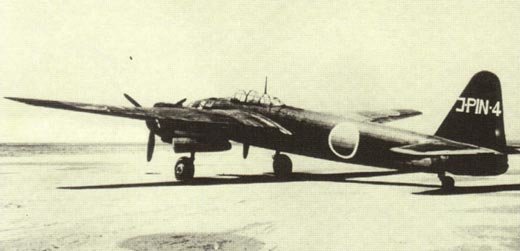In the spring of 1940, the Imperial Japanese Navy placed a requirement for a low flight, fast medium bomber platform with the ability to deploy torpedoes at low altitudes. The result was the Yokosuka P1-Y1 Ginga (Milky Way) Bomber. The first Ginga took to the air in August 1943. After an initial testing stage where the aircraft performed better than advertised, production of the new bomber was delayed because of manufacturing shortcomings. The delays forced the introduction of the Ginga to operational status for almost two years. It also meant that the first deployable P1-Y1, first achieved operational status in February 1945, would be the second version of the aircraft, the Model II, codenamed Frances by the Allies; rather than the original sample. Both versions had the same fuselage dimensions and armament distribution apparatus. What changed were the power plats and the firing mechanism on the heavy machine guns.
Nearly 1,100 units of the Ginga were produced before the war ended in August 1945. Fast and agile at low altitudes, the Frances became a worthy competitor for the best allied fighters. Unfortunately for Japan, the aircraft arrived at the front too late to make any significant contribution to the country’s war effort. Nevertheless, the Ginga proved to be a very powerful bombing platform. With a range of over 5,000km, the P1-Y1-II was able to reach even the longer range allied naval task forces operating in the vastness of the Pacific Ocean. But by this time of the war, Japan ran out of options for the employment of the Ginga and other similar, long range aircrafts unless they were use as suicide platforms.
| Power Plants: | Two Nakajima 1820hp Homare 11 Radial-Piston Engine |
| Armament Composition: | Two .78mm cannons, one forward firing and one rear firing. Total bomb load capability was 1760lb |
| Wingspan | 20m |
| Length | 15m |
| Height | 4.3m |
| Total Wing Area | 55m sq. |
| Maximum Takeoff weight | 13,500kg |
| Top Speed | 547kph |
| Service Ceiling | 9,400m |
| Operational Range | 5000km |
| Climb Rate | 650m per minute |
